Los cimientos de la armonía y de la invención. Escif. 2024
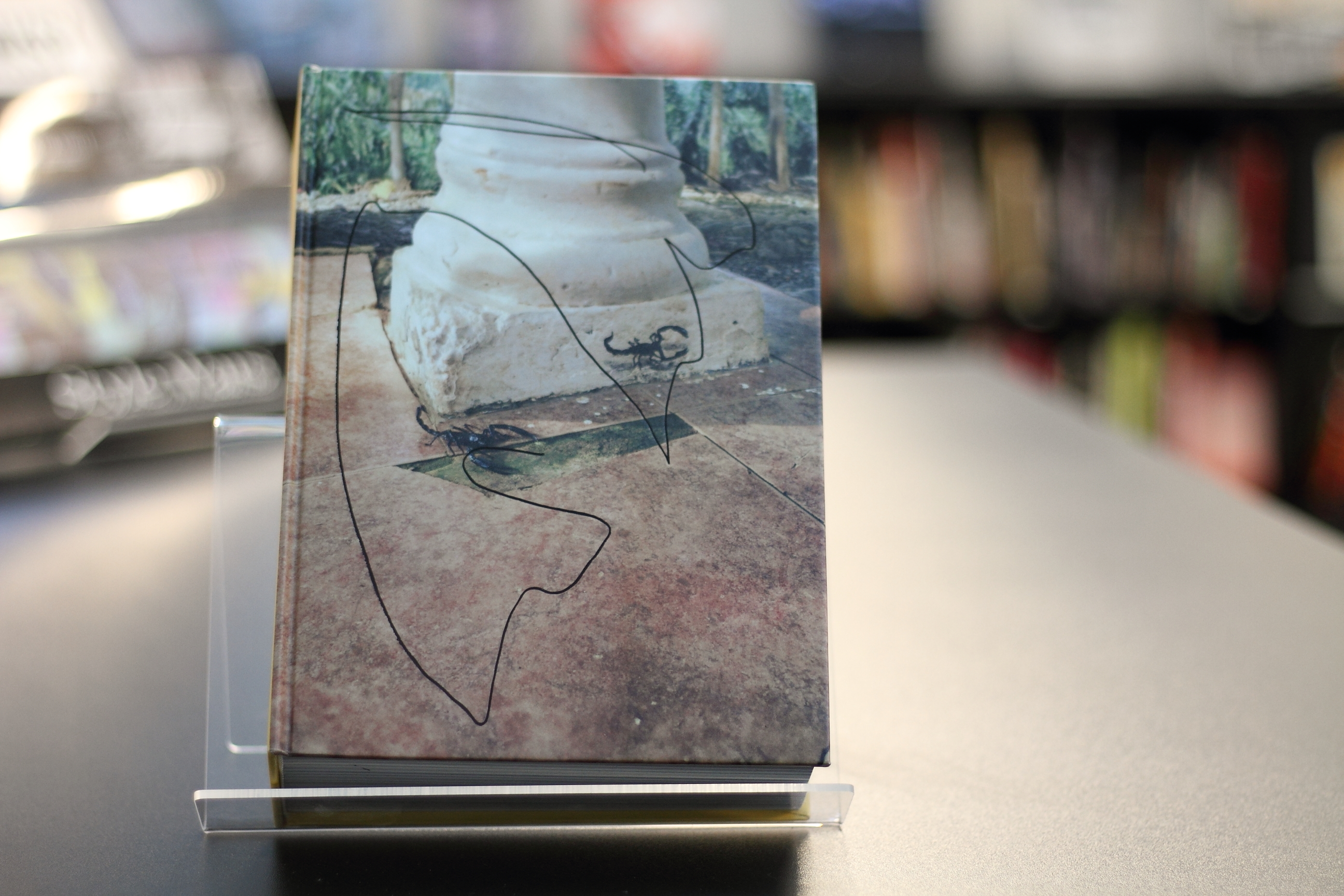
Spanning twelve years of studio and mural work, public interventions, installations, and collaborations, Los cimientos de la armonía y de la invención is Escif’s most comprehensive book to date, and possibly his most deliberate. At 600 pages, this massive, clothbound volume is both an archive and a slow meditation, mirroring the artist’s own evolution from a clever, idea-driven street painter into a conceptual provocateur whose understated gestures leave wide, lingering ripples of interpretation. Drawing its title from Vivaldi’s Il cimento dell'armonia e dell'invenzione, the book positions Escif’s art as both experiment and orchestration—a counterpoint of humor and grief, silence and confrontation, metaphor and material.
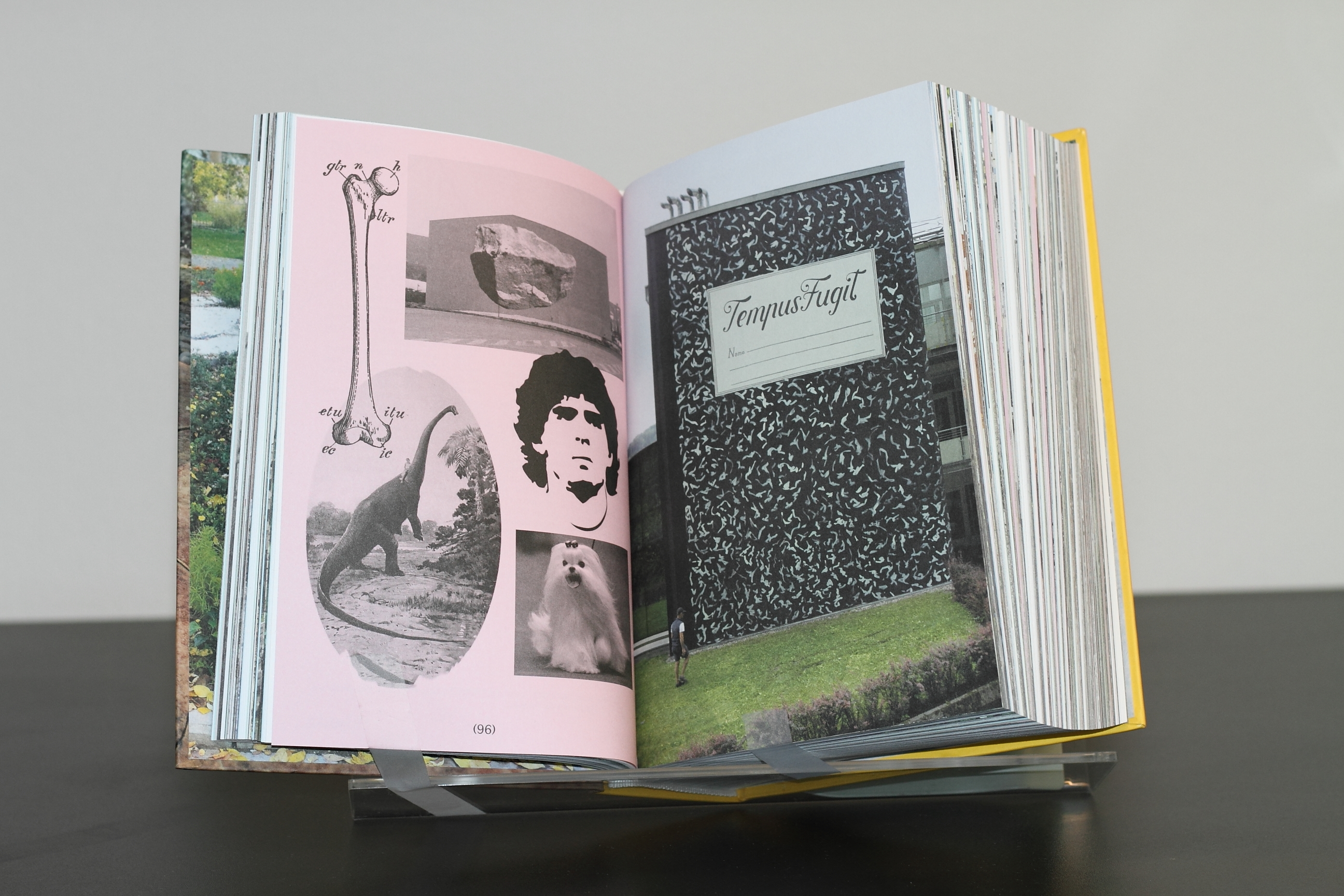
Escif’s reputation rests on his ability to place subtle yet impactful works into public space—a painted ladder rising to a window, a cracked phone on a corner facade, a series of sleeping figures mapped across city rooftops. Based in Valencia, Escif began his graffiti practice around 1996–1997 and started developing his public mural and intervention work in the early 2000s; this period overlaps with peers like Hyuro and SAM3 who were also gaining recognition in Spain. He soon distinguished himself with minimalist forms and sharp, socially aware narratives. Escif’s visual language borrows from signage, illustration, and protest banners, but his tone is often that of a haiku or fabled tale: distilled, ambiguous, gently subversive.
A recurring theme is rupture—between humans and the natural world, between economies and ethics, between surfaces and what lies beneath.

In Los cimientos, Escif organizes roughly a decade of work not chronologically, but thematically and associatively, allowing ideas to echo and unfold. The book avoids linear accounts and embraces transversal, even cubist narrative logics. It visually situates itself at what the artist calls "the intersection between the hubris of the encyclopedia and the deconstruction of a sponge cake" —a delightfully absurd image that perfectly captures the mix of philosophical depth and playful dissonance in his work. The structure draws on the Chinese theory of the five transformations and takes inspiration from the conceptual rhythm of Vivaldi’s concertos.
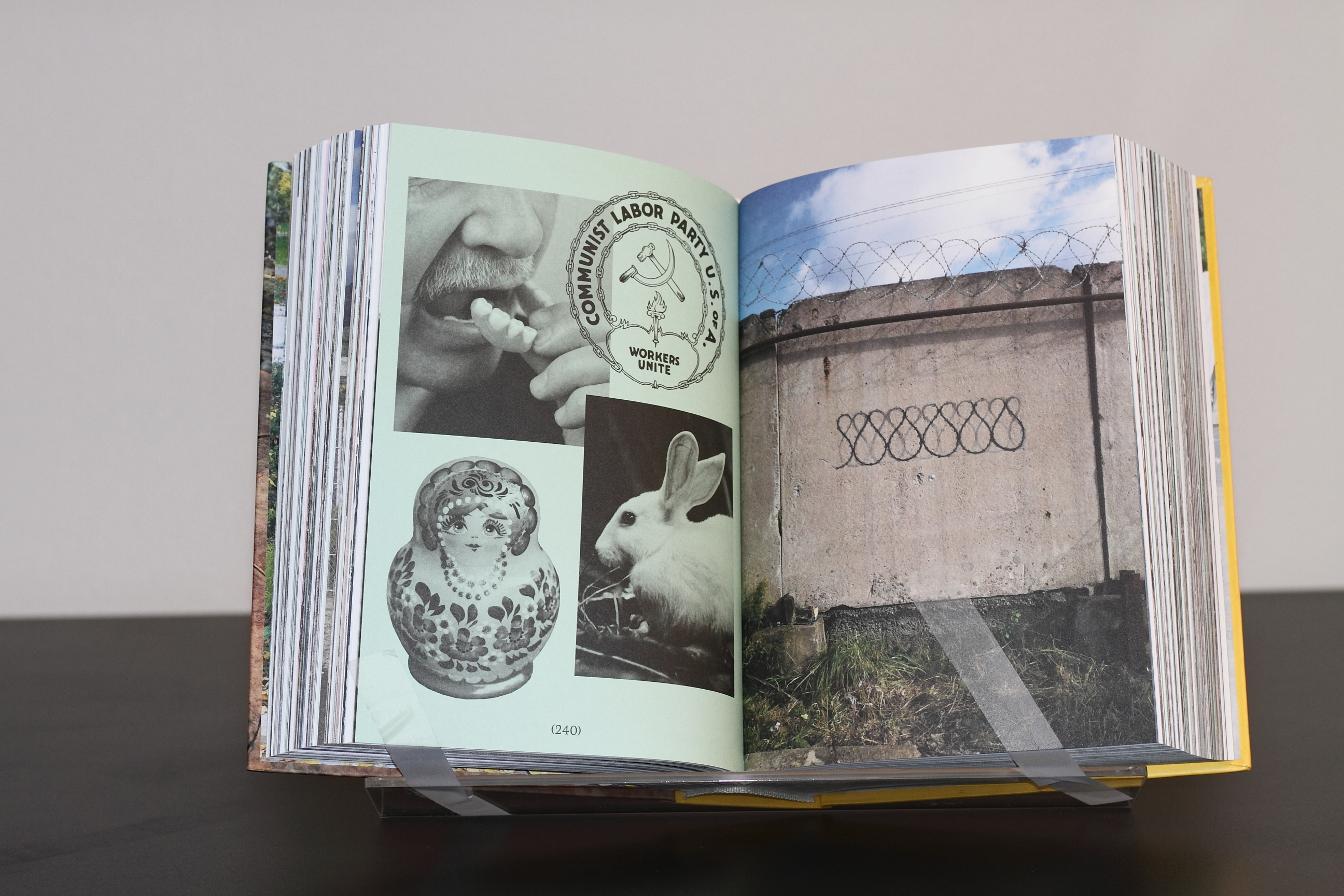
Sections intersperse high-resolution mural documentation with texts, drawings, proposals, and pages of handwritten notes. Excepts and quotations from writers like Santiago Alba Rico, Teresa Juan Tato, and Nacho Magro Huertas add a philosophical thread, unpacking the artist’s long-standing critiques of capitalism, nationalism, and ecological detachment. Others, such as Friedensreich Hundertwasser and Hakim Bey, are invoked in spirit through citation and reference, framing Escif's art in a lineage of poetic resistance.
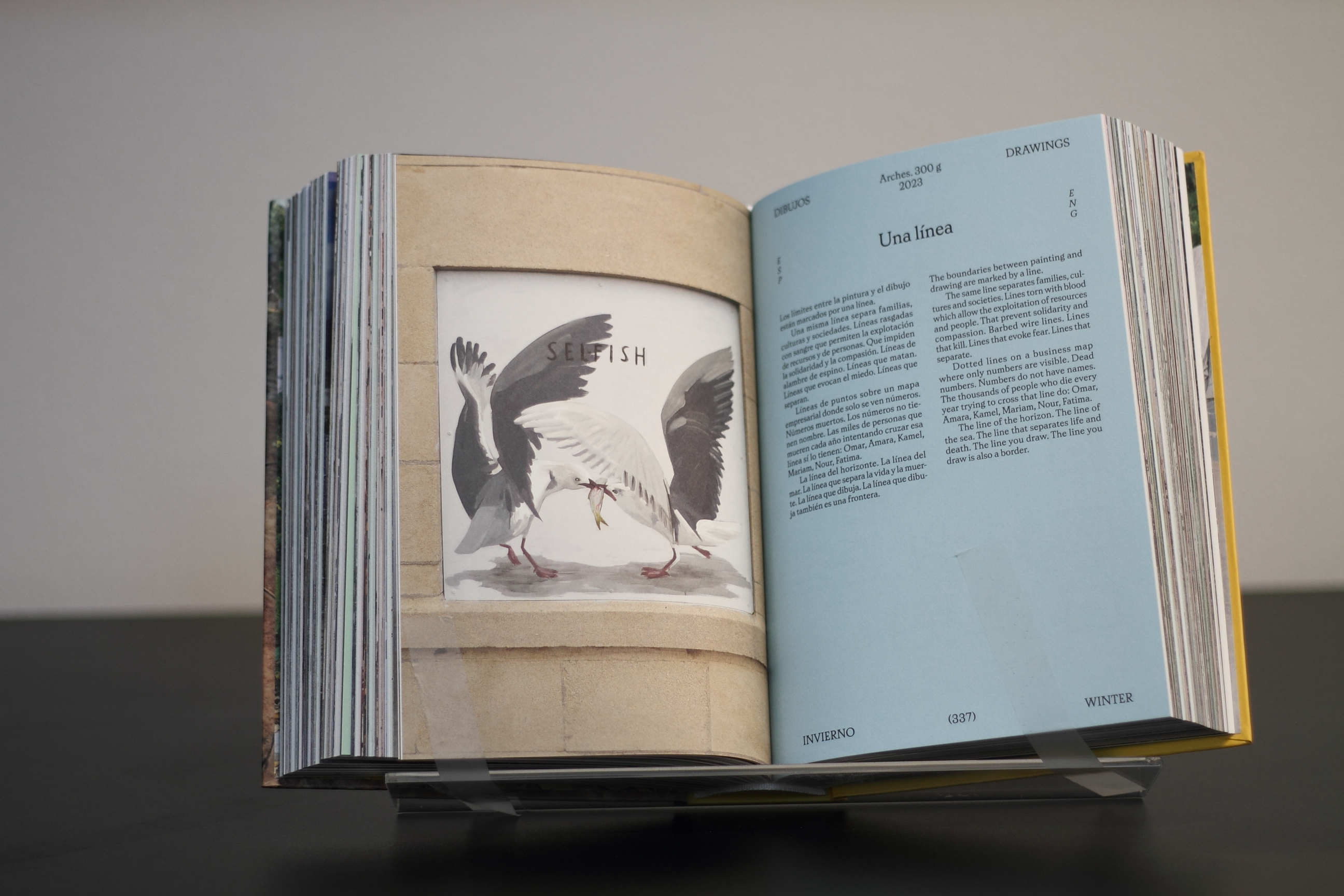
Design-wise, the book is restrained and elegant. Antonio Ballesteros (Formo) lends a light but assured touch in design and layout. The bilingual format (Spanish and English) is unobtrusively handled, often running in parallel columns. Layouts leave generous margins and pauses, reflecting the artist’s preference for emptiness as a space of potential. At times, the book feels like a conceptual map of Escif’s inner mechanics: how he links urban planning to psychological resistance, or how a painted mural can act as both a question and a refusal. Photographs are well printed and unfussy, often showing murals in situ with passersby, shadows, or decay, plainly temporary.

This publication marks a significant pivot in Escif’s practice—not a departure, but a consolidation. While earlier zines and books served more as portable portfolios or project records, Los cimientos is authored, like a long letter to the future. It acknowledges the paradoxes of working in public space: to be seen yet remain anonymous; to critique the system while embedded in it. It also embraces contradiction as a principle of invention. In one spread, a diagram tracks the rising cost of housing against the number of empty homes in Spain; in another, a mural depicts a pair of lungs filled with tree branches. These gestures are visual arguments—quiet, sharp.
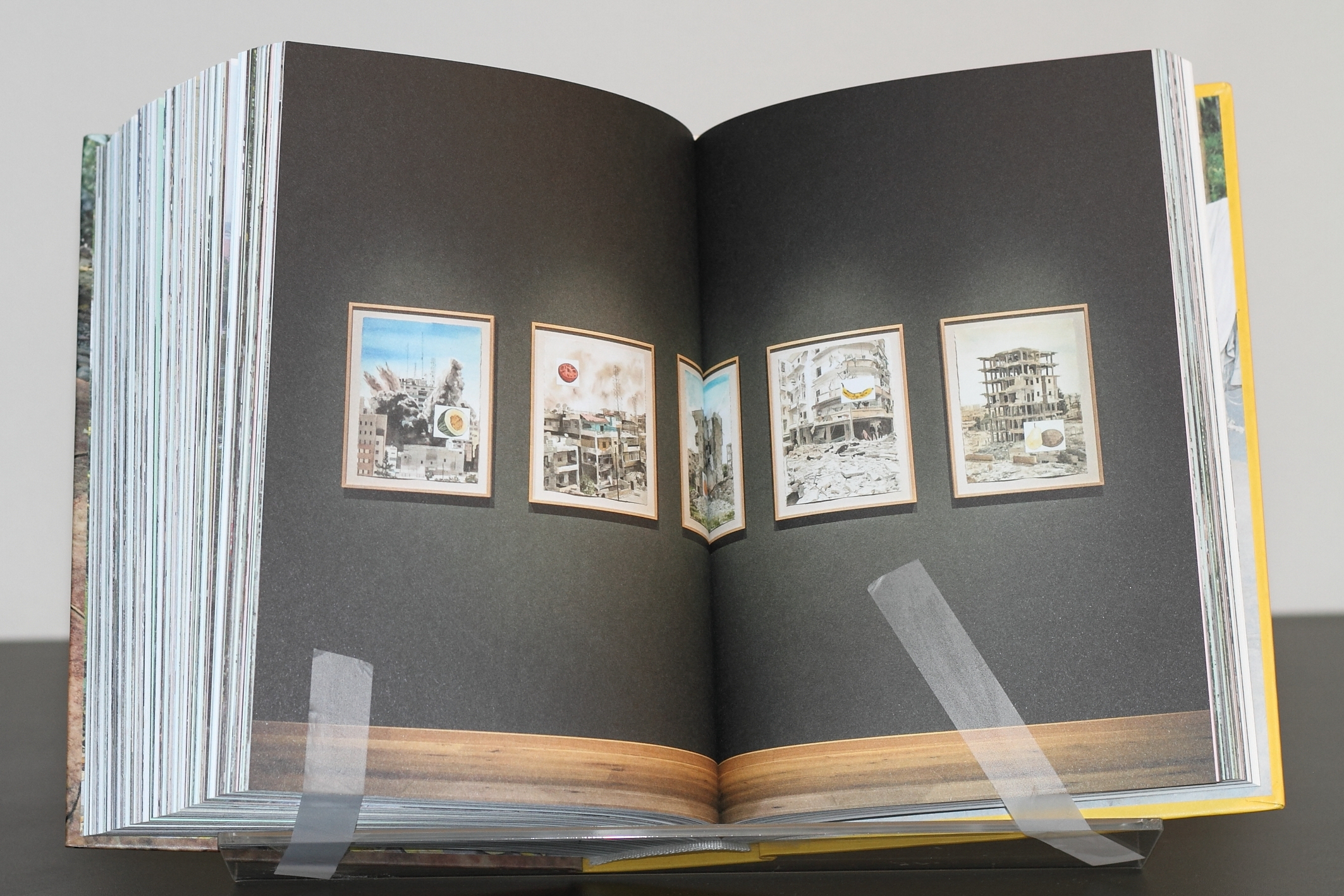
Its tactile production—clothbound spine, offset printing, archival-quality paper—aligns with its long-view intent.
The acknowledgements section affirms the communal nature of Escif's artmaking: a shared process across friends, activists, producers, thinkers, and walkers. His gratitude is palpable: "Each person in their own plot has made this book possible. I feel fortunate to share this volume with you, of which you are also responsible."
Collaborators such as Axel Void, Daniel Muñoz, Ernest Zacharevic, and the Unmute Gaza collective appear across its pages, reinforcing Escif’s broad, intersectional approach to resistance and creation. Students, technicians, and poetic advisors alike are credited, with poetic guidance and frank gratitude.
For readers unfamiliar with Escif, this volume offers initiation. For longtime observers, it is a milestone: a comprehensive, self-authored anatomy of an artist who refuses to shout, but whose work continues to echo. His is a slow manifesto for the political imagination—a field manual for quiet resistance, a record of what it means to think deeply in front of a wall.
Text Steven P. Harrington & Jaime Rojo Fotos Eveline Wilson